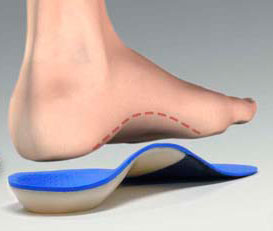History and Presenting Symptoms
A 27-year-old female describes a history of aching pain and tightness extending from her lower back into the pelvic region and both hips. She describes a recurrent pain that has bothered her since she was in a motor vehicle collision at the age of sixteen. As a passenger, she injured her right leg and hip during a frontal impact with a light post. No fractures were detected, but she had diffi culty walking for several months, and still gets very fatigued when walking or standing for more than 20 minutes. Her current pain is generalized to the posterior pelvis, but also involves her lower back and extends into both hips. On a 100mm Visual Analog Scale, she rates the pain in her lower back and pelvic region as varying from 30mm to 50mm.
Exam Findings
Vitals. This young woman weighs 152 lbs, which, at 5’9’’, results in a BMI of 22—she is not overweight. She reports that she attends yoga classes regularly and works out on a circuit training program at a local fi tness center. She has never smoked; she drinks beer occasionally; and her blood pressure is 118/76 mmHg with a pulse rate of 64 bpm.
Posture and gait. Standing postural evaluation fi nds a lower right iliac crest, and a low right greater trochanter. The left shoulder is somewhat lower than the right, but the spine demonstrates no signifi cant lateral curvature. Her knees are well aligned, but there is obvious medial bowing of the right Achilles tendon, with a lower medial arch on the right foot. During gait, the right foot toes-out and pronates excessively. Inspection of her shoes finds scuffing and wearing at the lateral aspect of the right heel.
Chiropractic evaluation. Motion palpation identifi es limitations in segmental motion at the right SI joint, with localized tenderness and loss of endrange mobility. Gaenslen’s and Yeoman’s tests for SI joint dysfunction both cause increased pain when the right side is stressed. Lumbar ranges of motion are within expected norms, and neurologic testing is negative for sensory, motor, and refl exive disorders.
Imaging
A lumbopelvic series (AP and lateral lumbopelvic views) is taken in the upright position during relaxed standing. An obvious discrepancy in femur head heights is noted, with the right side 6mm lower. A moderate lumbar curvature (5°) is convex to the right side, and the sacral base angle and measured lumbar lordosis are somewhat increased, but within normal limits. No loss of joint spacing or osteophyte formation is seen in the hip joints.
Clinical Impression
Chronic lumbopelvic misalignment, with mechanical dysfunction of the right sacroiliac joint complicated by leg length discrepancy. The difference in leg lengths is “functional,” since it is due to asymmetry of support in the lower extremities. The inequality results in a pelvic tilt and a slight lumbar curvature.
Treatment Plan
Adjustments. Specifi c chiropractic adjustments for the right sacroiliac joint and lumbar spine were provided as indicated. Manipulation of the right foot, including the navicular, cuboid, and calcaneal bones, was also performed. Support. Flexible, stabilizing orthotics were custom-made, and a pronation correction was added to the right side. The inserts provided support for her arches and included viscoelastic shock-absorbing material to decrease the biomechanical stress on her pelvis and sacroiliac joints.
Rehabilitation. She was shown a lumbopelvic muscle-training program to do in addition to her regular workouts. The “easy eight” exercises were performed daily at home using elastic exercise tubing.
Response to Care
The pelvis and foot adjustments were well tolerated, and the orthotics signifi cantly improved her postural alignment. After fi ve weeks of adjustments (eight visits) and daily home exercises, including wearing the orthotics, she was released to a self-directed maintenance program.
Discussion
This healthy and fi t young woman had a chronic pelvic misalignment caused by a prior injury. It was associated with pronation and biomechanical dysfunction in the right lower extremity. This asymmetry perpetuated her pelvic imbalance, in spite of a well-rounded fi tness program. She responded well to an appropriate combination of chiropractic adjustments, stabilization and support from custom-made orthotics, and specific exercises for the lumbopelvic support musculature.
Dr. John J. Danchik is the seventh inductee to the American Chiropractic Association Sports Hall of Fame. He is the current chairperson of the United States Olympic Committee’s Chiropractic Selection Program and lectures extensively in the United States and abroad on current trends in sports chiropractic and rehabilitation. Dr. Danchik is an associate editor of the Journal of the Neuromusculoskeletal System. He can be reached by e-mail at [email protected].

 History and Presenting Symptoms
History and Presenting Symptoms
